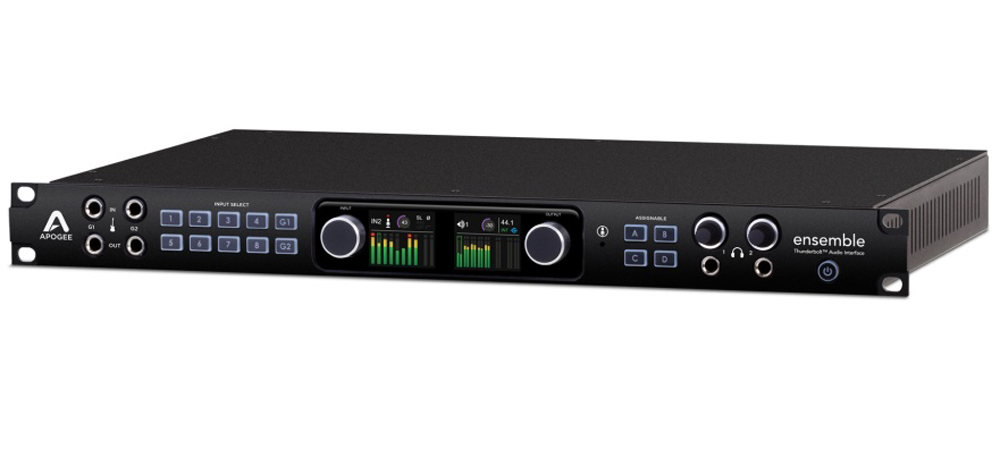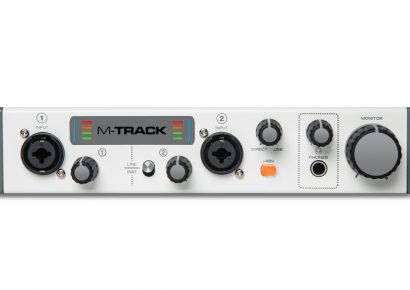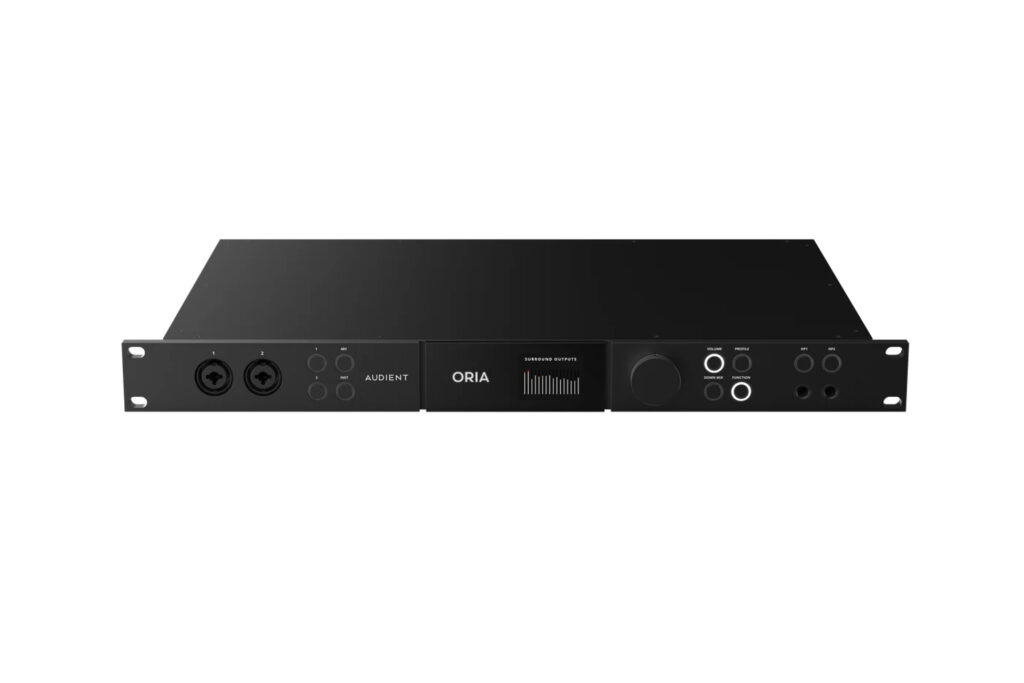UP FRONT
For an interface that crams so much onto a single rack unit, the front panel is kept sparsely populated and very well presented. Two jog wheels allow you to control input and output levels with a range of fixed and assignable buttons. What I really like is the addition of two guitar inputs on the front of the unit. Sure, this isn’t a breakthrough idea, we have all seen that before, but when they are paired up with a couple of re-amp outputs, you know the design team at Apogee have nailed it with this unit. It’s such a simple idea, yet so cleverly executed. This will change the way many studios work with guitar recording. You can capture the clean guitar sound up front and send the signal back out into an amp of your choice to be recorded. You can then switch the amps around and send the same clean signal at the same level that would have come from your guitar originally, back into those amps to find the tone that works for you when it comes to the mix.
AROUND THE BACK
This is where Apogee seems to have defied the laws of physics by placing more physical input connections onto a single rack unit than you would have deemed possible. You get 8 XLR microphone inputs, four of which have combination XLR/TRS connections, and two send and return points on TRS connectors as well. Work clock, SP/DIF and two lots of ADAT ins and outs are all there for taking care of digital interfacing and adding track count from external preamps. The sneaky design aspect is that there are only two genuine analogue outputs for your monitors on the rear of the unit. It’s a very clever move on Apogee’s behalf, saving space for inputs instead. You have the option of adding a further 8 outputs with an optional breakout cable, but many users will simply not find the need for this. In all, this is an interface that ticks all the boxes and delivers results at an incredible speed. The audio quality has to be heard to really understand and latency isn’t going to be an issue. This is a well-designed, sleek looking unit that delivers what it promises and streamlines workflow for larger home studio and professional users. I think I want one.


